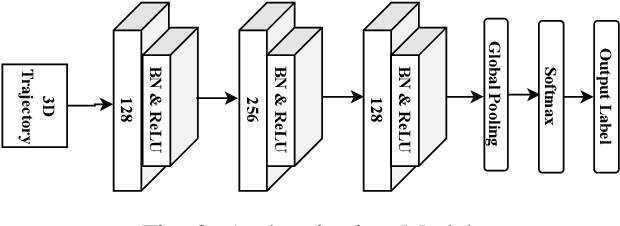Predicting 3D Motion from 2D Video for Behavior-Based VR Biometrics
Paper and Code
Feb 05, 2025



Critical VR applications in domains such as healthcare, education, and finance that use traditional credentials, such as PIN, password, or multi-factor authentication, stand the chance of being compromised if a malicious person acquires the user credentials or if the user hands over their credentials to an ally. Recently, a number of approaches on user authentication have emerged that use motions of VR head-mounted displays (HMDs) and hand controllers during user interactions in VR to represent the user's behavior as a VR biometric signature. One of the fundamental limitations of behavior-based approaches is that current on-device tracking for HMDs and controllers lacks capability to perform tracking of full-body joint articulation, losing key signature data encapsulated by the user articulation. In this paper, we propose an approach that uses 2D body joints, namely shoulder, elbow, wrist, hip, knee, and ankle, acquired from the right side of the participants using an external 2D camera. Using a Transformer-based deep neural network, our method uses the 2D data of body joints that are not tracked by the VR device to predict past and future 3D tracks of the right controller, providing the benefit of augmenting 3D knowledge in authentication. Our approach provides a minimum equal error rate (EER) of 0.025, and a maximum EER drop of 0.040 over prior work that uses single-unit 3D trajectory as the input.
 Add to Chrome
Add to Chrome Add to Firefox
Add to Firefox Add to Edge
Add to Edge